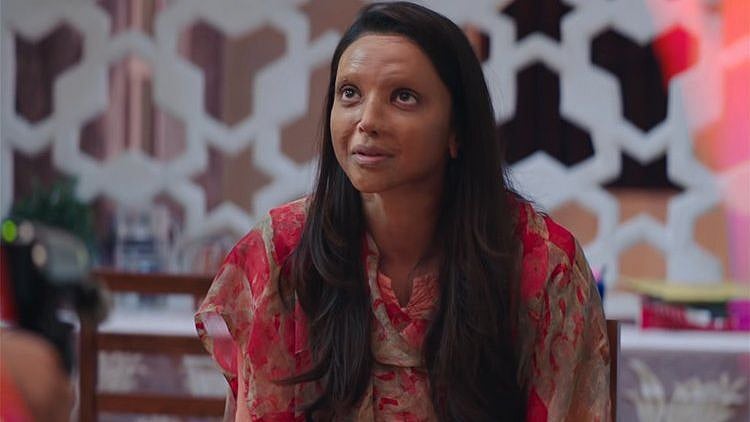
How Deepika Calling ‘Chhapaak’ Her “Favourite Look” Messed Us Up
Oh, Deepika - ye kya kiya?

advertisement
Deepika Padukone has become the face of controversy after her visit to JNU to stand in support with the students brutally beaten up there. Now, Deepika is under fire again for collaborating with Tik Tok user @faby_makeupartist, challenging her to recreate three of her favorite “make-up looks”, including ‘Om Shanti Om’, ‘Piku’ and (wait for it)....Chhapaak.
Yes, for Deepika Padukone, an acid attack victim’s face is a “make up look”, which girls should now try and re-create at home, as if it is a style statement to walk around with scars. The only problem is, unlike the make-up Deepika used in her film, real acid-attack victims can’t wipe off their burnt skin.
So what happens to Bollywood? On the one hand we have Deepika standing with the students of JNU, knowing fully well the backlash she will face, and the next second she does something so entirely tone deaf. Coming from a person who has made a whole film on acid attack survivors, has met with them, heard their painful stories...then to call their pain and trauma “a look”. When it comes to driving a narrative, our film industry often messes up.
Netizens quickly pointed out the problem. However, Deepika hasn’t apologized.
Similar discussions had come up with the release of super-hit film Uri: The Surgical Strike, the release for which preceded with the launch of Uri video games, that asked players to torture their captives by shouting things like “slap him” and “cut off finger!” Truly, no thought was given to the kind of hyper-nationalism that was being fed down people’s throat or the desensitization to violence that resulted out of the whole episode - simply because it helped promote the idea the film itself was trying to sell. A business is a business, but where does one draw the line?
No.1 Khiladi Akshay Kumar contributed to similar problems too. To promote his film Khatta Meetha - in which he plays a common man - Akshay went to visit an ailing RK Laxman in the hospital. The whole affair was as insensitive as it was embarrassing. While Laxman, trying to recover from three strokes, couldn’t recognize Akshay, the actor continued to pose next to him, smiling with all his teeth out, as the old cartoonist looked on with confused eyes. The common man would have cried.
When it comes to social responsibility, our movie stars are always struggling. To cut them some slack, I say yes, the pressure must be unfathomable. But is that enough to overlook the blatant disregard for the negative influence they could have out of being simply careless? Moreover, are we wrong to call them out? Does not “great power” come with “great responsibility”?
Are we to step back and see Deepika for the human being who is capable of mistakes just as all of us are, or stand with victims like Laxmi Agarwal who have been reduced to a commodity, their pain and horror that they live each day reduced to some strokes of a brush? Where do we expect sensitivity if not from people who CHOOSE to make films on topics of social good, then go out and do something so reprehensible, simply to get people to theatres? Moreover, how long do we brush it aside as “mistakes” anyway?
Some questions will go unanswered.
- Access to all paywalled content on site
- Ad-free experience across The Quint
- Early previews of our Special Projects
Published: undefined